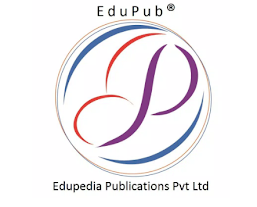With 50% of India’s population under the age of 25, India is poised to have the largest workforce by 2027. While the demographic dividend could be in favour of India, there are some stiff challenges that we are faced with.
“Individuals with combination of Skills, viz- broad-based education and training, basic and portable high-level skills, including teamwork, problem solving, information and communications technology (ICT) and communication and language skills are most employable and adaptable to changes in the world of work.”
- International Labour Organization
Acquiring life skills is of foremost importance when young people prepare for the job market. This is because:
- At the entry-level, employees are expected to be able to understand, comprehend, communicate and problem-solve.
- Opens array of sectors for young people to kick start their career rather than confining them to a sector or job.
- These skills are essential to get better jobs and increase their chances for career progression.
To start with, Skill Development Team conducts student mobilisation activities in schools and colleges through presentations & posters and in villages & local communities through mobilisation vans, pamphlet distribution, community meetings, etc. The team further works with Village Pradhan, frontline workers (like ASHAs and AWWs) to mobilise prospective students. Minimum qualification required for undertaking these courses is higher secondary.
Improved training and skill development is critical for providing decent employment opportunities to the growing youth population and is necessary to sustain the high growth momentum.
The insufficient skills and illiteracy compel the poor section of the society to put more than extra physical efforts. This is how they fulfill their basic needs. Despite sweating hard, they manage to earn daily wages only. “Unfortunately, a few of them don’t get to work daily.”
To uproot this curse from the lives of poor people, NGO provide “Free of Cost” skills development programs for poor and needy people. These are specifically drafted to upskill the downtrodden people. These programs include Computer Hardware, Computer Training, Mobile Repairing, Sewing Training, Mehndi Design, Incense Stick etc.
Poverty is pronounced deprivation in a well- being and comprises many dimensions, including low incomes, and the inability to acquire the basic goods and services necessary for survival. Poverty alleviation implies the reduction or eradication of poverty level in any society, skill training in various programs leads to acquisition of competencies to generate wealth through applicable Programs with skills and competencies to become self-employed. Lack of skills and experience and Mismatch between supply and demand for labour may be adjusted by the entrepreneurial skills on how to find business ideas to encourage young people to start their own business.
Poverty means more than simply low income. It includes lack of voice in determining what goes on in one’s community, as well as vulnerable livelihoods. Food insecurity is often a reality of poverty. Skills development contributes to social and economic integration in poor people’s lives. Skills development can be considered as a public good.Lack of access to education and training maintains a low level of education and productive skills among the rural poor.
Skills Development Programs by Narayan Seva Sansthan gives according to your interest.
Skill development Programs have to be aligned to ensure better employment opportunities for the Poor People. In, the country the lack of relevant skills of the underprivileged youth group and a mismatch between supply and demand in the market leads to very poor employability and lower wages for them. Narayan Seva Sansthan has also taken various efforts at the national and regional level to promote health, education to unprivileged people. In this research it has been emphasized that necessary education, training and skill development programs are very necessary for disadvantaged group to have a better life. Invest in the skills and employability of workers contributes to the improvement of productivity and competitiveness. But a great number of destitute children are not getting the basic needs like education and skill development training which is leading them to poverty, insufficient nutrition and illiteracy. A complete strategy for Skills Training Programs Linked to Employment will need to be developed so that underprivileged group can have access for skills training leading to employment. Skills are vital for productivity and growth and are in fact at the core of improving people’s employment outcomes.

As we all know that in today’s generation Education is the most important key to success, this is a very general statement and all people are familiar to this. In, this pragmatic world survival and day to day income become impossible to huge number of educated communities.
Skills development for poor people be also essential to address the opportunities and challenges meeting new demands of changing economies and new technologies in the context of globalization.
Title of Book | Training and Skill Development by NGO |
Editor Name | SUMIT SINGH CHANDEL |
ISBN no. | 978-81-951123-0-2 |
Imprint | IJR |
Year | 2022 |
Edition | First |
Language | English |
Genre | Education |
Publisher | Edupedia Publications Pvt Ltd |








.jpg)














.jpg)

